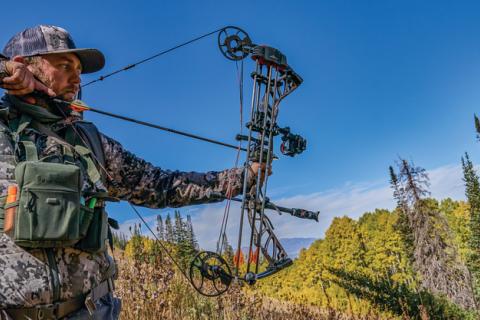
In hunting, there is perhaps nothing as exciting as drawing back on a big whitetail or elk with a bow. Archery success demands the combination of stealth, precision and an intimate understanding of animal behavior. Before you can climb into the tree stand, however, you’ll need to find the right bow for your situation—and learn how to use it.
The Bass Pro Shops and Cabela’s Guide to Compound Bows provides a reference for everything you need to start your journey into archery. For the beginner or prospective bowhunter, the first step generally involves selecting a bow that will fit your needs, physical stature and budget.
No matter where you fall on the archery spectrum, Bass Pro Shops and Cabela’s is your source for bowhunting. In fact, we’re proud to serve more bowhunters than anyone in the world. Before getting into how to select bows, we should provide some context about the value of experience and expert instruction (and where you can find it).

The Bass Pro Shops and Cabela’s Instore Archery Experience
There is a great deal of value and utility in visiting your local Bass Pro Shops and Cabela’s to purchase your new bow (or to set up the bow you’ve purchased online). Our archery Outfitters are experienced, knowledgeable and take great satisfaction in helping prospective archers get the right bow. Not only can our Outfitters help you select the right bow, but they can adjust the draw weight, draw length, and position the bow’s accessories to exactly fit your body and strength level.
Each of our stores has its own shooting range. It is here that Bass Pro Shops and Cabela’s Outfitters can help you learn to shoot your new bow. Learning the right grip, anchor positions, footing and release techniques is the foundation of proper shooting form. The right form is essential to success in any archery endeavor—be it hunting, target shooting or even competitive archery. Being able to actually use your new bow is also very helpful (some might say essential) to determining the right draw length and draw weight.
 |
| A single visit to Bass Pro Shops can outfit you with everything you need for bowhunting success. |
Our Bass Pro Shops and Cabela’s archery Outfitters can also recommend all of the products you need—while helping you avoid those that you don’t. Access to knowledgeable, trustworthy opinions imparts confidence that you’re getting the right stuff. Confidence is another important aspect of archery success.
Before getting too far into any of the models individually, we should also add a bit of context about the universe of compound bows that are available. Some guidance on how to interpret the landscape of bows, products and accessories goes a long way toward simplifying the shopping experience.
BlackOut Bows: Unmatched Combination of Performance and Value
The modern compound bow market is marked by a variety of high-performance options. The technology and craftsmanship that goes into these bows is such that it can seem difficult for a prospective archer to select one. This is a great problem to have… you could choose to purchase any compound bow offered by Bass Pro Shops and Cabela’s with the expectation that it would perform well and meet your needs.
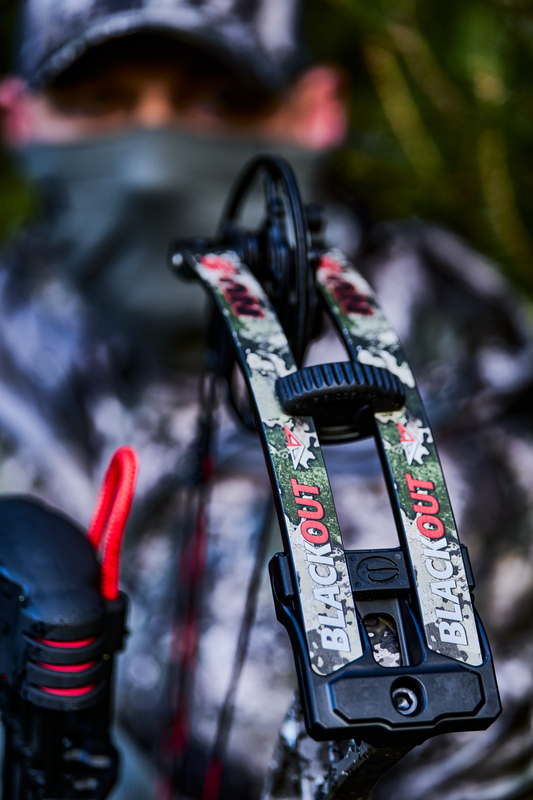
With that being said, BlackOut Archery offers a variety of benefits to those who choose to purchase one of its compound bows. Every bow that BlackOut makes is high performance, designed by expert archers, and made to deliver in the field. The brand and everything about it was born of passion for bowhunting and expertise in the field.
There is, however, one factor that dramatically differentiates BlackOut Archery from all other brands. BlackOut offers perhaps the best value proposition in bowhunting, delivering a ratio of performance to value that is unmatched.
When comparing bows with similar features and performance attributes, BlackOut delivers a price point that competitors cannot match. Across its product line, that means more bow for your money.
Here are a few select BlackOut compound bow options.
High Performance, All-Around Compound Bow
BlackOut NV32 - The flagship bow from BlackOut Archery.

BlackOut Distinct - features a caged riser and a number of other technical innovations.

BlackOut Epic X2 - combines power, adaptability and easy handling.
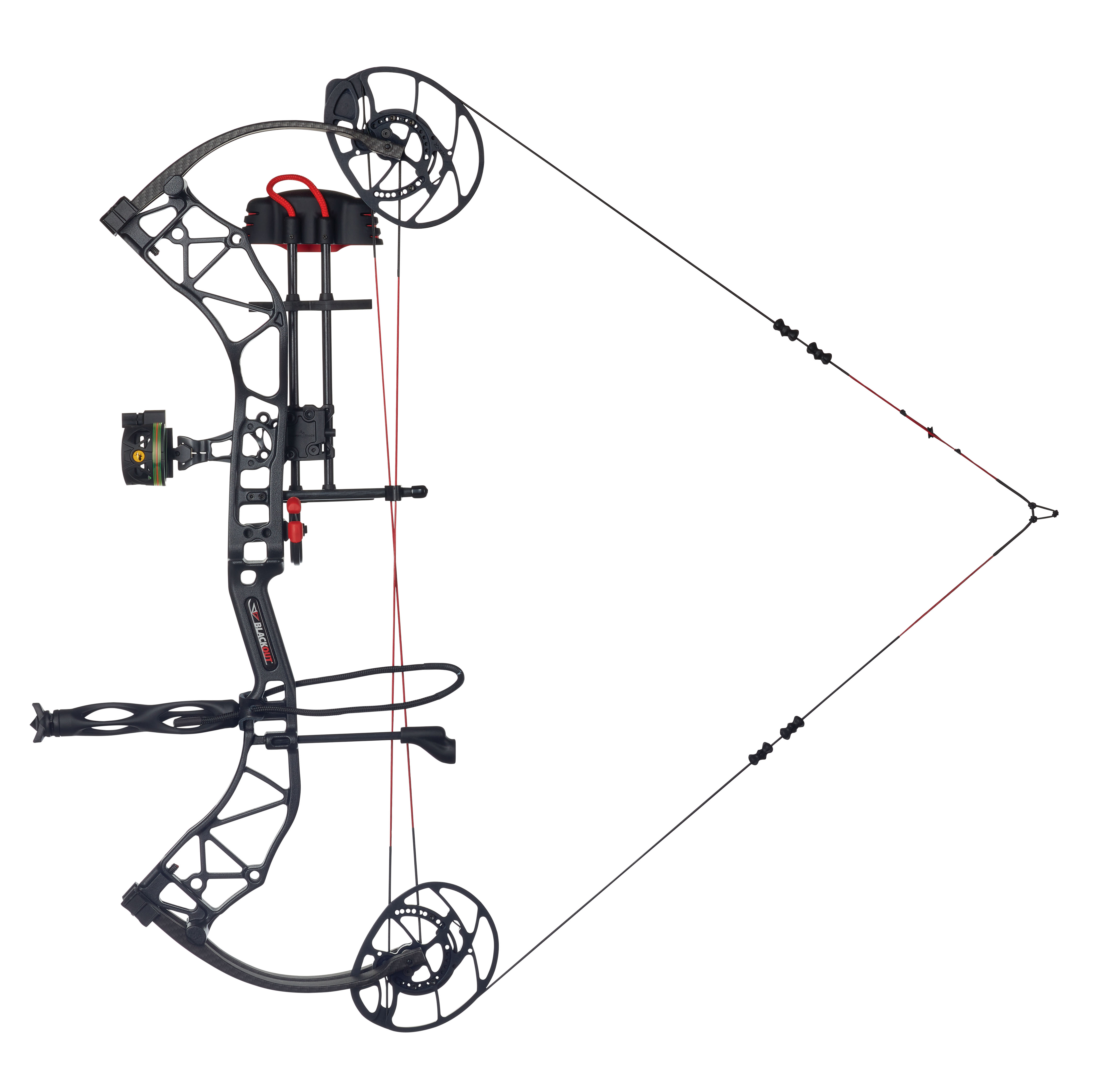
The Best Compound Bow for Youth and Small-framed Shooters
BlackOut Faze - grow-with-your bow with widely adjustable draw weight and draw length.

Finding the Right Bow for You
With some background on the benefits of shopping with Bass Pro Shops, Cabela’s and BlackOut Archery, let’s describe the process of selecting the right set up for you. This is largely the same sequence that the Bass Pro Shops Archery Outfitters go through to help match customers with the right bow.
The first step, in fact, has nothing to do with the bow. First you need to determine a few things about yourself.
- Which eye is your dominant eye?
- How long, in inches, is your wing span?
- How much can you comfortably pull back?
- How do you plan to use your bow?
Armed with this basic personal information, you can begin the process of making an informed bow purchase decision. Combine this with your budget (allowing room for the purchase of the additional gear and equipment you’ll need along the way) and you’re ready to hit the tree stand… well, almost.
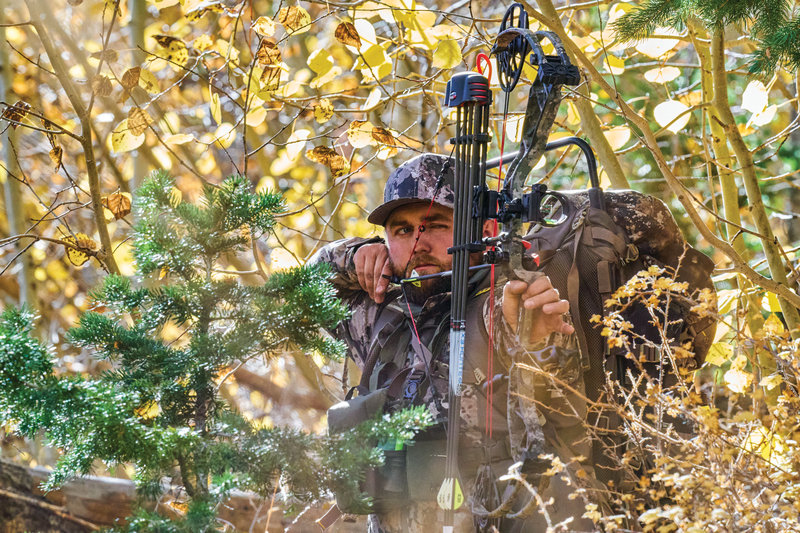
Eye Dominance:
Just as you have a dominant hand, most of us have a dominant eye. Knowing which one of yours is the dominant eye will dictate how you aim and which set up will be right for you.
To find out how you see the world, simply stretch your arms in front of you and set up a triangle between your hands (the triangle will be in the gap between your touching pointer fingers and thumbs). Place the triangle on an object on a far wall or someplace in the distance.
First, focus on the object with both eyes open.
To determine which of your eyes is dominant, continue looking at the object while closing one eye at a time.
When one of your eyes is closed, the object will remain in place. This, the open eye that produces the fixed location, is your dominant eye (and the one you aim with). When you close the other eye, the object will jump—perhaps becoming blocked by your hand.
This is the foundation for selecting the bow you need—right handed or left handed. For most people, your dominant hand will be the same side of your body as your dominant eye.
If you’re right handed and left eye dominant (or vice versa), that’s an easy fix. You’ll either go with a left handed bow or a right handed bow with a modified peep sight placement (the Bass Pro Shops and Cabela’s bow tech raise your peep sight (the little tube built into the bow string) a bit higher.
 |
| Looking to outfit a young archer? Check out our Best Bow for Kids article. |
Bow Size:
There are two general rules when it comes to sizing bows and arrows:
- The bow must fit the shooter.
- The arrow must fit the bow.
Determining the right size bow for you involves considering several variables about yourself and understanding a few archery-specific words.
Draw Length:
The first involves how big you are—more specifically, how long your wingspan is.
Stand with your back to a wall and reach your arms out by your side, palms facing out, fingers fully extended—make sure not to stretch. Have a friend measure your wingspan. Divide this number by 2.5 and you’ll have an approximate draw length that will guide your selection. The taller you are, the longer your draw length.
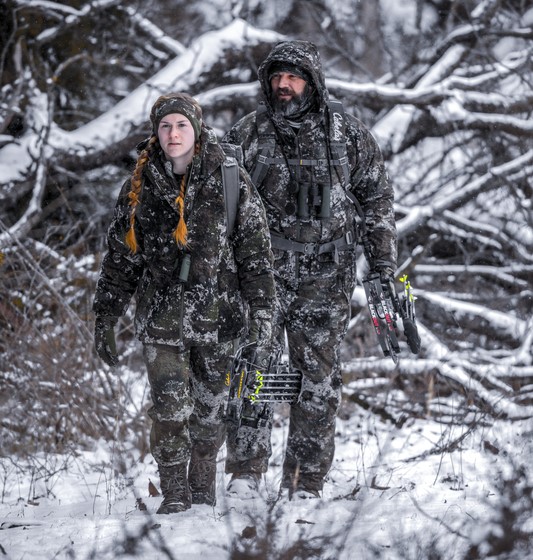 |
| No two hunters are exactly alike. Adjustable draw lengths and draw weights are made to accommodate. |
After you’ve measured yourself, look for a bow that offers a draw length range that will fit your body. Draw length is the distance between the bow string’s position at rest and at full draw. It is expressed in inches and will be provided as a range (you can adjust it to fit your size).
Once you have your number, just make sure you purchase a bow with a draw length range that will suite you (ideally with an inch or two to spare on either side). The archery Outfitters at Bass Pro Shops and Cabela’s can tune your bow for you—adjusting the draw length (and draw weight) to make it perfect.
Starting out with a well fitted bow is an important first step in creating consistent shooting techniques you’ll need to be successful. If the draw length is too long or too short, not only will shooting it be less comfortable, but it can affect your aim.
Draw Weight:
Draw weight is the amount of force required to draw the bow. This has two implications.
It provides an indication of how fast your arrow will travel (and how large of an animal you can target with it) and how strong you’ll need to be to use the bow.
Archery success requires not only accuracy, but precision. To be confident in the woods, you’ll need to be able to consistently place arrows where you want them. Form and technique are the foundation of consistent shot placement.
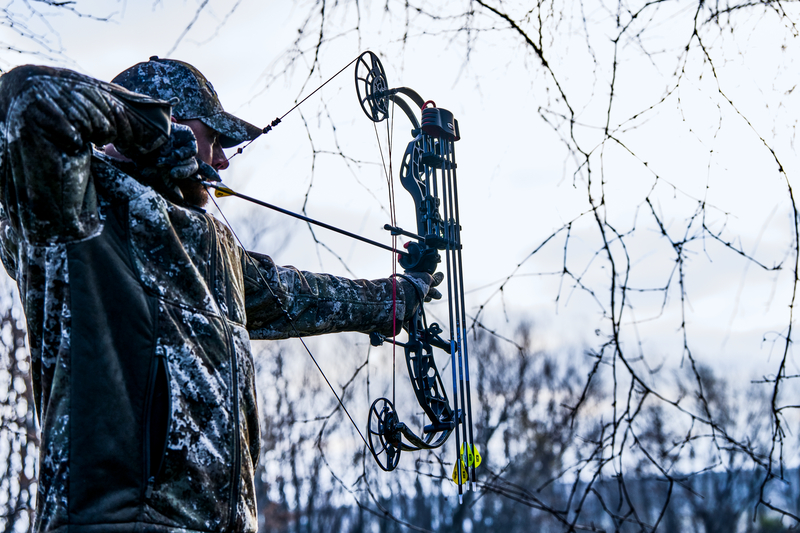
For this reason, the beginning bowhunter might think of the process of learning to shoot less like a bench press competition and more like learning to ride a bicycle. A good beginner’s bow is one that is easy and comfortable to draw.
This ease and comfort provide the foundation for learning good technique. You’ll then repeat the technique frequently enough that it turns into muscle memory.
Some states require a minimum 40-pound draw weight for deer hunting (be sure to abide by regulations where you hunt). Using this as a benchmark, consider starting on the lighter side and building up the draw weight as you become accustomed to shooting your bow.
Most compound bows offer adjustable draw weights, allowing you to build up resistance through time. Drawing back heavier weights as you progress will allow you to target larger game and potentially increase your range as well. No matter your ultimate aspiration, however, it all starts with being able to shoot consistently.
Let Off:
As you research compound bows, you’ll come across the term let off. Usually expressed in terms of a percentage, let off is the weight reduction that happens when a compound bow is at full draw.
For a bow with a 50-pound draw weight and an 80% let off, it will require 10 pounds of force to hold draw before shooting. This shoulder-saving benefit of the compound bow can really be important while waiting, at full draw, for a shot to present itself.
The Height and Width of Your Bow: Brace Height and ATA
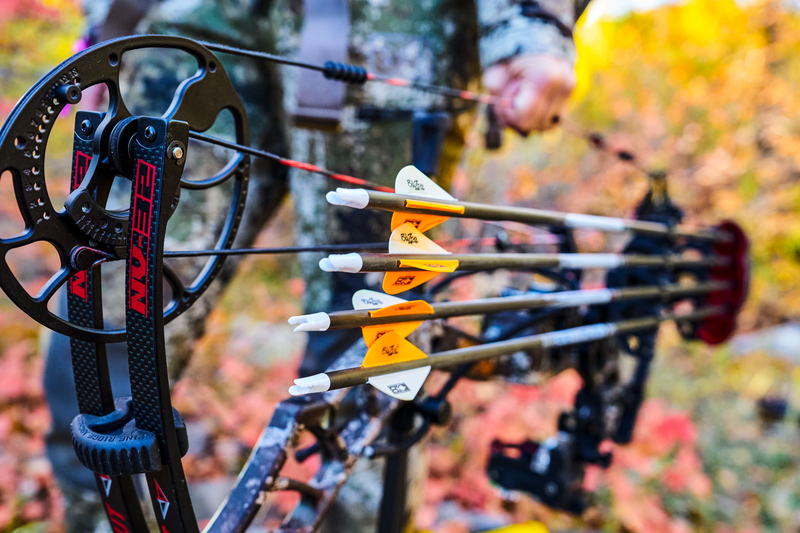
Brace Height:
A bow’s brace height measures the distance between the deepest part of the bow grip to the bowstring while at rest. On most compound bows, this distance measures in the range of six to seven inches.
The shorter the distance, the faster the bow will shoot. The longer the distance, the more forgiving it will be of shooting errors or poor technique.
While brace height remains an important consideration when comparing different models, the technology incorporated into the modern compound bow make the differences less important than shooting technique. Find a bow that fits you, learn proper shooting techniques and consistently follow them. Practice, practice.
The more you do it, the better your results will be… the more you’ll enjoy your bow. That’s before you thump a nice buck with it this fall.
Axle to Axle Height or ATA:
Axle to axle height measures the distance between the two cams (the circular, wheel-looking objects at either end) of the compound bow. This range typically measures to around 31 to 34 inches, with a few bows on either side.
The implications of a bow’s axle to axle height have similar implications to its brace height. Taller bows will shoot a bit slower, though they will be a bit more accurate. In fact, competition archers shoot bows that are on the longer end of the spectrum.
So, what does this mean for you? The quality and performance built into modern compound bows mitigate these differences. For most beginning bow hunters, the most practical consideration of axle-to-axle height involves considering where and how you plan to use your bow.
If you’re hunting from a ground blind, with limited space to maneuver, or will haul your bow up into a tree stand twice a day, there are benefits to using a bow on the shorter, more compact side. If you’re a spot and stalker or plan to sling arrows at greater distances (with no space constraints), you might consider a longer bow.
Everything Else You Need
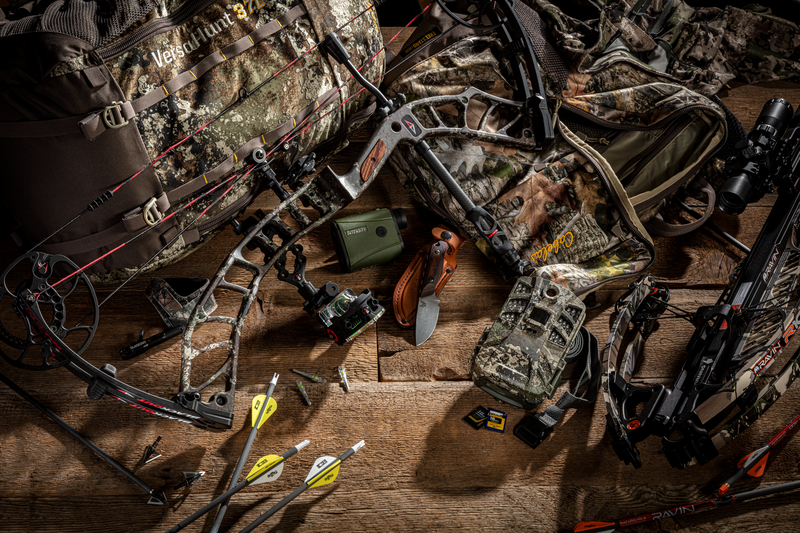
Once you’ve decided on the bow you like, it’s time to round out your archery kit. A great option for a beginning bowhunter is to purchase a ready to hunt or RTH package.
These packages generally include: three or five point sights, quivers, arrow rests, stabilizers, peep sites and d loops. These packages are designed to make it easy to get started and are great ways for beginning archers to get a feel for what they’ll need. Of the BlackOut bows listed above, the Distinct, Epic X2, and Faze RTH are sold as packages with necessary equipment included.
If you opt to outfit your new bow yourself, you can purchase each of the accessories listed above individually at Bass Pro Shops and Cabela’s.
Beyond the on-bow accessories, here’s a gear list that will round out your bow package:
- Arrows—picking the right arrow involves matching the spine to your draw weight and having it sized to match your bow (Bass Pro Shops and Cabela’s archery Outfitters will cut your arrows to match your draw length and glue in the tip inserts)
- Release
- Broadheads
- Field Points—you’ll want to practice with these
- Allen wrenches
- Broadhead wrenches
You'll also likely want to buy:
- Bow case—available in all weather and soft sided options.
- Bow sling—this will make it helpful to pack your bow into the stand with you—freeing up both hands
- Targets
- 20373 views

